Key takeaways
- Design Thinking centers on empathy, breaking complex problems into manageable steps, fostering creativity and adaptability in educators and students alike.
- Activist teacher resources empower educators to stimulate critical thinking and activism, creating a shared commitment to social justice and equity.
- The process requires flexibility and a willingness to embrace ambiguity, using student feedback to drive engagement and solution development.
- Measuring impact focuses on qualitative shifts in student engagement and mindset rather than solely on traditional assessments like tests or grades.
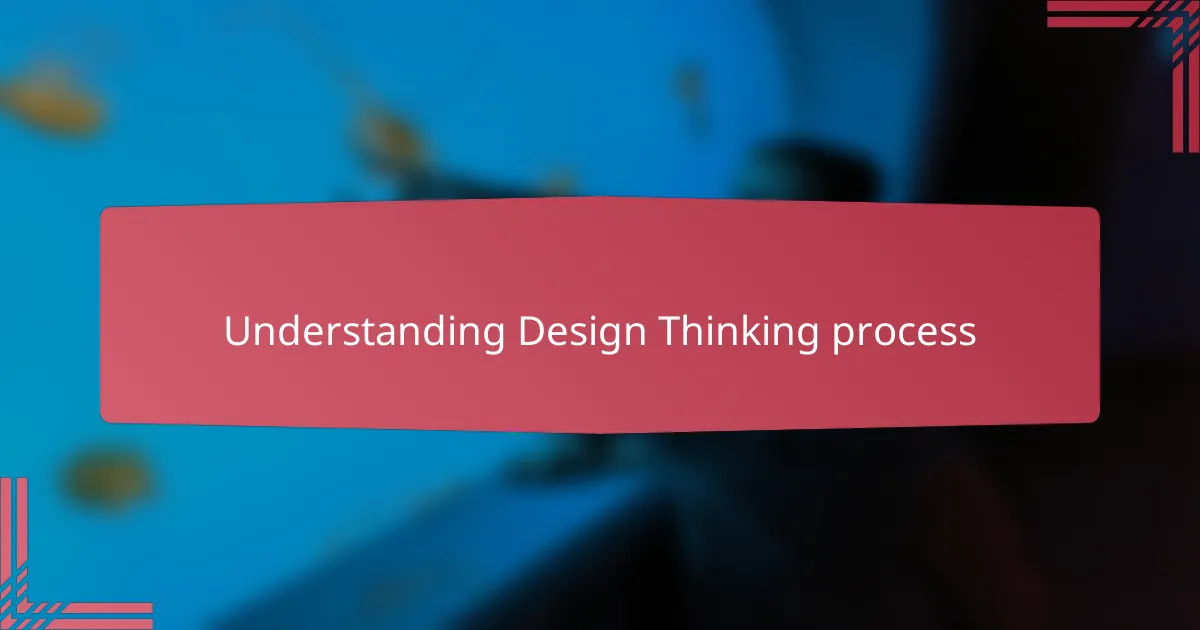
Understanding Design Thinking process
Understanding the Design Thinking process means embracing a way of thinking that puts people and their needs at the center. I’ve found that seeing problems through this human-focused lens makes the whole approach feel more intuitive and meaningful rather than just a rigid method.
Have you ever felt stuck because a problem seemed too complex or overwhelming? Design Thinking breaks things down into manageable steps—empathizing, defining, ideating, prototyping, and testing—which, from my experience, turns what feels impossible into something achievable and even exciting.
What struck me most was how open-ended this process is; it invites curiosity and experimentation instead of demanding perfect answers upfront. That freedom helped me approach challenges with less fear of failure and more eagerness to learn and adapt—something I think every activist teacher can appreciate.
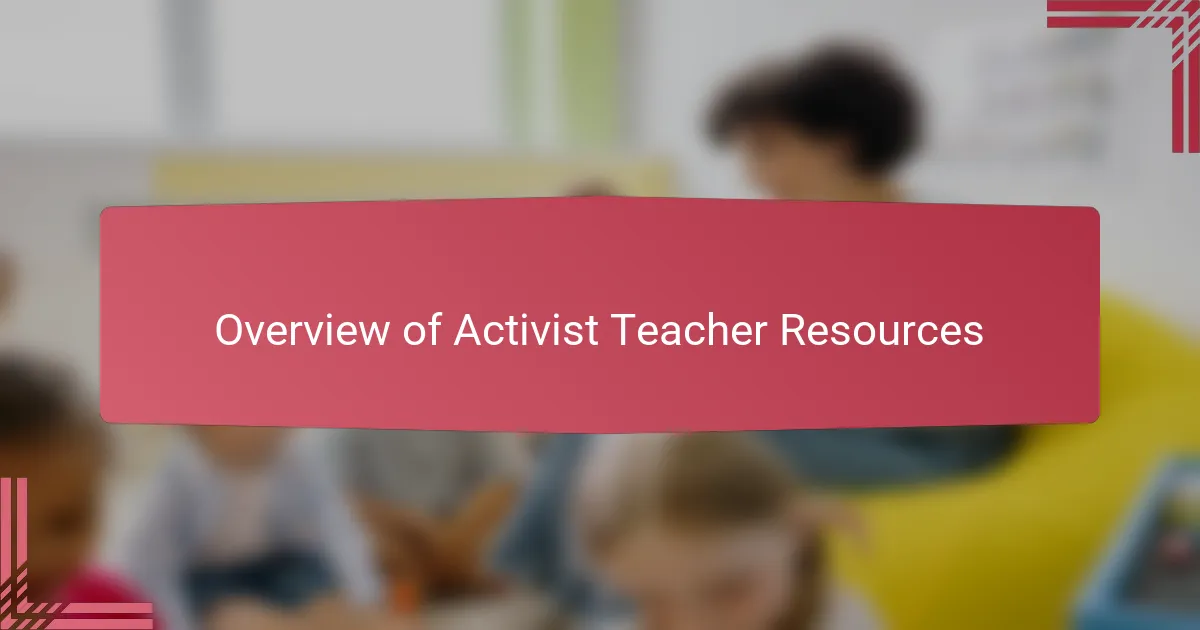
Overview of activist teacher resources
When I first explored activist teacher resources, I was amazed at how diverse and creative they are—ranging from lesson plans that challenge the status quo to community-building tools that connect students with real-world issues. These resources felt like a breath of fresh air because they empower educators to bring meaningful change right into the classroom.
Have you ever wished for materials that don’t just teach content but also spark critical thinking and activism? That’s exactly what these resources offer. They don’t shy away from tough topics; instead, they encourage students to question, debate, and ultimately become active participants in shaping their communities.
What really resonated with me was how these resources foster a sense of solidarity among teachers and students alike. It’s not just about delivering information—it’s about creating a shared commitment to justice and equity, which, in my experience, makes teaching feel both purposeful and profoundly rewarding.
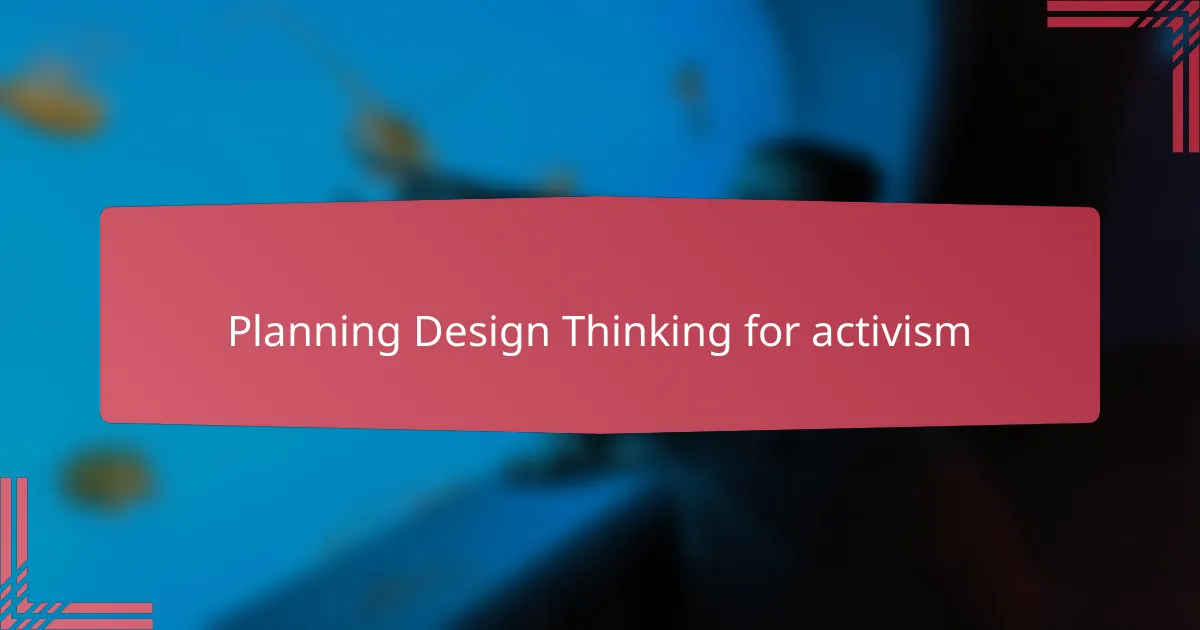
Planning Design Thinking for activism
Planning Design Thinking for activism felt like mapping out a journey where each step needed purpose and flexibility. I remember sitting down with my team, asking ourselves: What real pain points do our students and communities face? That question shaped everything—we had to ground the process in authentic experiences to make our activism truly resonate.
Choosing the right moments to pause and reflect was another game-changer. Instead of rushing through ideation or prototyping, we deliberately built in time to gather feedback and listen deeply—something I found vital in maintaining empathy throughout. Have you noticed how rushing can sometimes blind us to the nuances of an issue? Slowing down actually opened up richer solutions.
I also realized that planning isn’t just about logistics; it’s about fostering a mindset of openness and resilience. Activism isn’t neat or predictable, so our design thinking needed to embrace messiness and unexpected insights. This mindset shift made me more comfortable with ambiguity and ready to pivot, which, in my experience, is where real transformation begins.

Applying design thinking in the classroom
Applying design thinking in the classroom has been a rewarding challenge for me. I remember the moment when I invited my students to share their own experiences around social issues—they opened up in ways I hadn’t expected. That first session of empathizing truly set the tone, making the learning more personal and impactful.
Have you ever tried turning a lesson into a hands-on project where students themselves become problem solvers? When we moved into ideation and prototyping, I saw students’ creativity flourish; they brainstormed solutions to problems they cared about, making the process feel alive rather than just theoretical. It was thrilling to watch their ideas evolve through trial and error.
What really surprised me was how applying this method shifted classroom dynamics. Instead of me controlling the answers, I became a facilitator—encouraging reflection, iteration, and courageous thinking. This shift created a space where students felt empowered to take ownership of both their learning and their activism, and that, in my experience, is where true engagement happens.
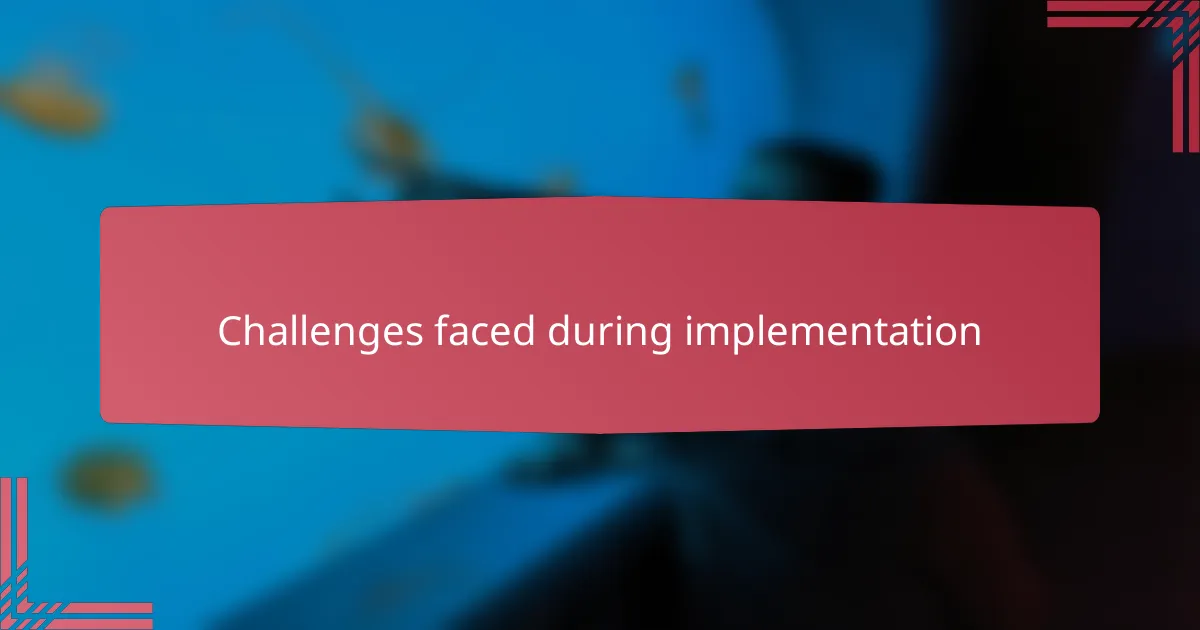
Challenges faced during implementation
One challenge I faced during implementation was balancing the open-ended nature of Design Thinking with the structured demands of a curriculum. I often found myself wondering, how can I give students freedom to explore without losing focus? It took several attempts and honest conversations with my students to find that rhythm.
Another hurdle was managing time effectively. The iterative cycles of prototyping and testing felt endless at times, and I questioned whether we’d ever reach a final solution. Yet, embracing that uncertainty taught me the value of patience and the importance of viewing setbacks as opportunities for deeper learning.
Lastly, engaging every student with varying comfort levels around activism was tricky. Some hesitated to share personal stories or critique systems openly. Creating a safe and supportive environment wasn’t always easy, but when it clicked, the classroom transformed into a truly collaborative space. Hasn’t that kind of breakthrough made all the struggle worthwhile?
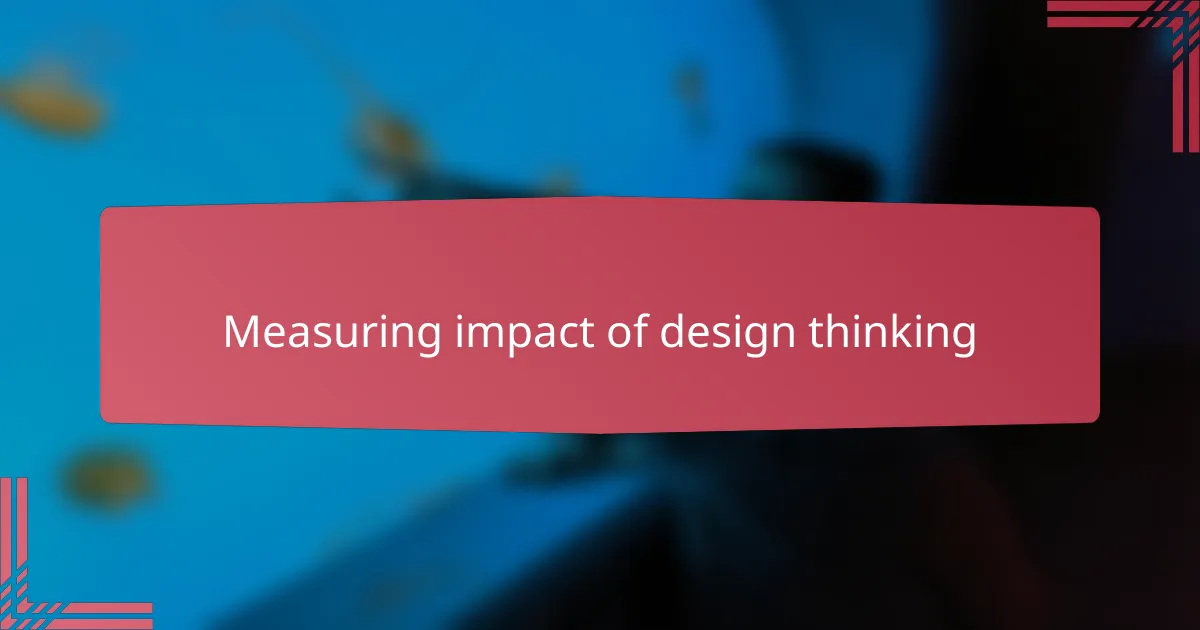
Measuring impact of design thinking
Measuring the impact of Design Thinking felt less like ticking boxes and more like noticing subtle shifts in how students engaged with problems. I asked myself, “Are they really owning these challenges, or just going through the motions?” Watching them return to ideas, revise them, and even challenge my assumptions showed me that impact was happening beneath the surface.
I found quantitative data helpful but never sufficient. Instead, I leaned on stories—moments when a student’s confidence grew or when a group’s solution sparked genuine excitement. These stories became my real indicators, reminding me that impact isn’t always immediate or obvious but unfolds in the courage to keep questioning and trying.
Have you tried measuring impact solely through tests or grades? I learned that with Design Thinking, it’s about capturing mindset shifts and new ways of seeing the world—things that don’t fit neatly into charts but transform how students act and think long after the project ends. That’s where the true power lies, at least in my experience.
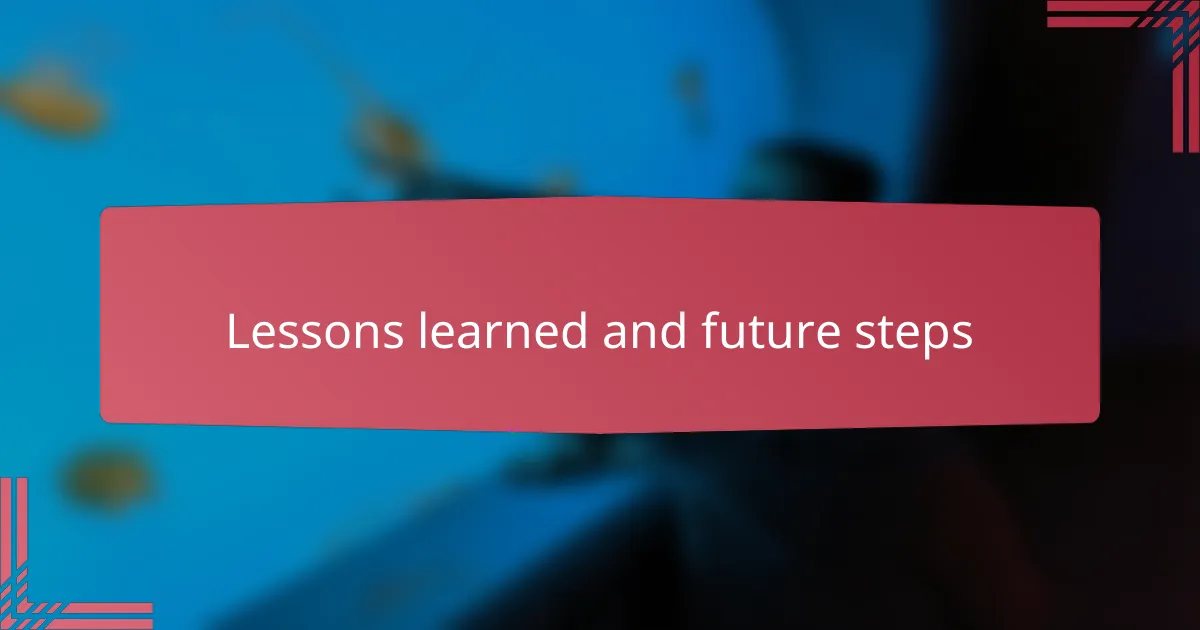
Lessons learned and future steps
One lesson that stands out for me is how essential flexibility is throughout the Design Thinking journey. I initially underestimated how often we’d need to pivot based on student feedback or unexpected challenges. Have you ever planned something meticulously, only to realize the real learning happens when you adapt on the fly? That realization shifted how I approach not just this process, but teaching activism itself.
Looking ahead, I’m eager to deepen the ways I incorporate student voices earlier and more often. Building stronger feedback loops feels like a key step to making solutions more responsive and authentic. Plus, I want to explore how to better balance open-ended exploration with keeping our focus sharp—because, honestly, that’s still a bit of a tightrope walk for me.
Finally, I’m committed to sharing these experiences with fellow activist teachers so we can learn together. What’s exciting is knowing that Design Thinking isn’t just a solo endeavor but a collective journey toward meaningful change. Continuing this conversation and collaboration feels like the natural—and necessary—next step.